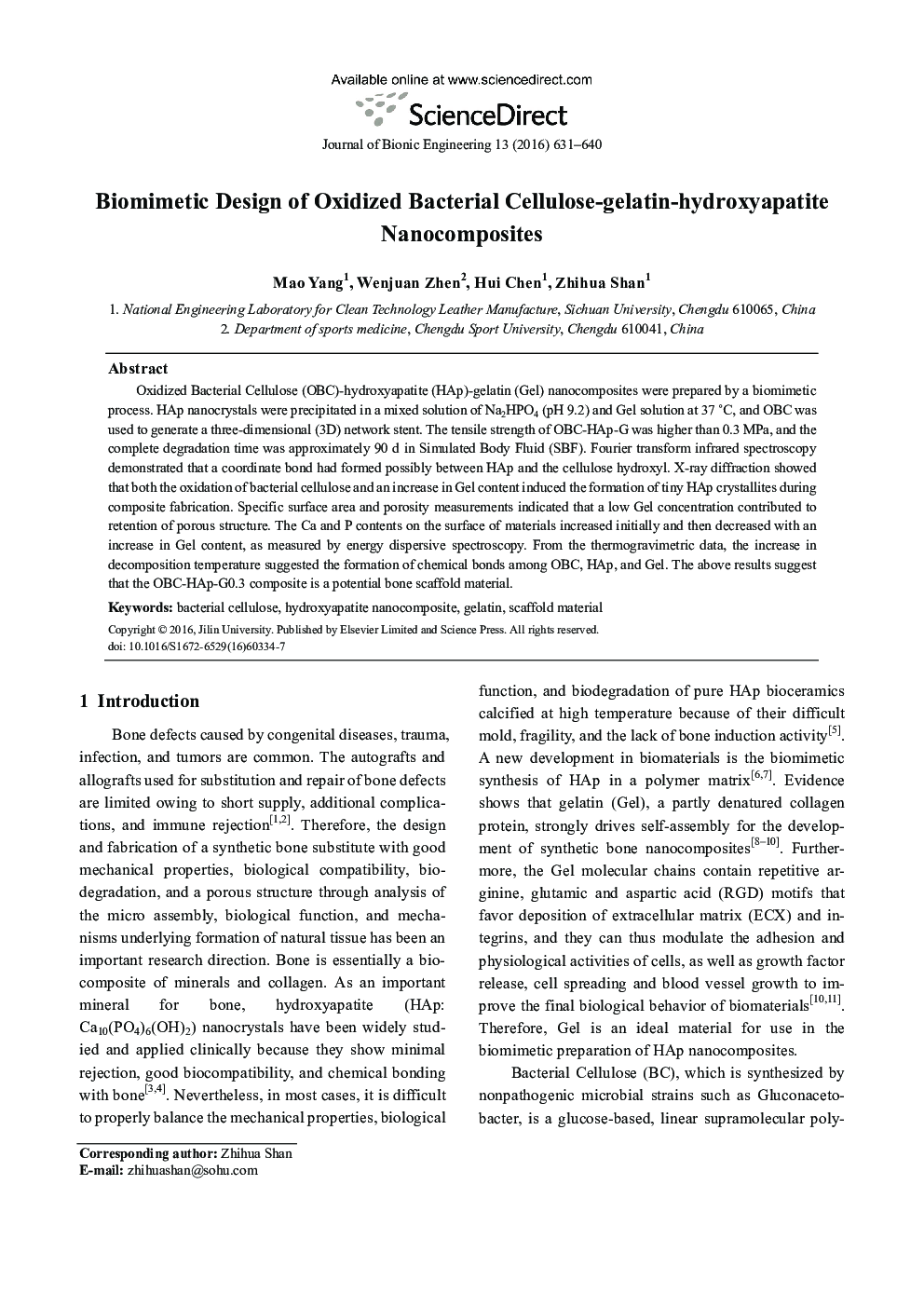| Article ID | Journal | Published Year | Pages | File Type |
|---|---|---|---|---|
| 7216524 | Journal of Bionic Engineering | 2016 | 10 Pages |
Abstract
Oxidized Bacterial Cellulose (OBC)-hydroxyapatite (HAp)-gelatin (Gel) nanocomposites were prepared by a biomimetic process. HAp nanocrystals were precipitated in a mixed solution of Na2HPO4 (pH 9.2) and Gel solution at 37 °C, and OBC was used to generate a three-dimensional (3D) network stent. The tensile strength of OBC-HAp-G was higher than 0.3 MPa, and the complete degradation time was approximately 90 d in Simulated Body Fluid (SBF). Fourier transform infrared spectroscopy demonstrated that a coordinate bond had formed possibly between HAp and the cellulose hydroxyl. X-ray diffraction showed that both the oxidation of bacterial cellulose and an increase in Gel content induced the formation of tiny HAp crystallites during composite fabrication. Specific surface area and porosity measurements indicated that a low Gel concentration contributed to retention of porous structure. The Ca and P contents on the surface of materials increased initially and then decreased with an increase in Gel content, as measured by energy dispersive spectroscopy. From the thermogravimetric data, the increase in decomposition temperature suggested the formation of chemical bonds among OBC, HAp, and Gel. The above results suggest that the OBC-HAp-G0.3 composite is a potential bone scaffold material.
Related Topics
Physical Sciences and Engineering
Engineering
Biomedical Engineering
Authors
Mao Yang, Wenjuan Zhen, Hui Chen, Zhihua Shan,
